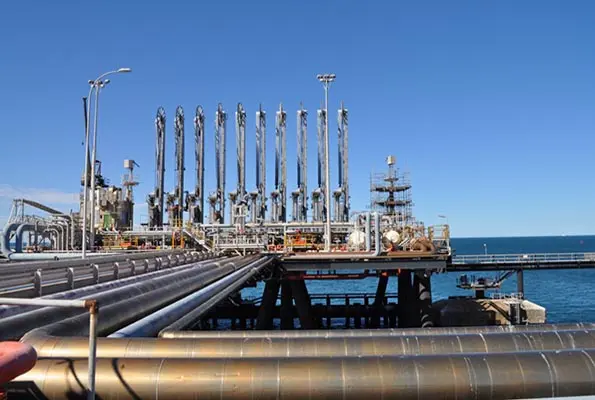The focus of the climate change discourse has to move from merely cutting carbon emissions to guaranteeing that developing countries may participate in a diverse green economy. However, it’s crucial to acknowledge that governments don’t have any other sources of income besides gas and oil in the Middle East. For example, this reliance is higher than 90% in Iraq.
The new, clean energy infrastructure will need to be financed by hydrocarbon income if hydrocarbon revenues account for the majority of government revenue in the area.
Grain and hydrocarbons have been the two key problems that have altered Middle Eastern diplomacy since the beginning of the Ukraine war.
In the months that followed, numerous nations in the area were compelled to drastically reevaluate their import policies for grain. In addition, as the West tries to strengthen its hydrocarbon supplies, the conflict in Ukraine is also changing geopolitical ties.
Europe looked to Qatar to make up for the gas supplies that had been cut off from Russia. Through its North Field East project, the Gulf nation has laid out ambitions to increase its liquefied natural gas (LNG) production by 40% annually by 2026. Additionally, in recent years, it has fostered relationships with many European importers.
Former UK Prime Minister Boris Johnson travelled to two Gulf nations in March 2022 to increase green energy deals and lower his nation’s reliance on Russian energy.
PM Boris Johnson met Mohammed bin Zayed Al Nahyan, the Crown Prince of the United Arab Emirates, during his visit to Abu Dhabi. The two leaders expressed gratitude for their long-standing alliance and talked about ways to strengthen their cooperation in the areas of trade, green technology, and energy security. This summit raises the possibility of the Gulf area serving as the UK’s primary energy transition partner.
The Middle East is going through an energy transformation even as it attempts to supply the rest of the globe with energy. Launched by the Crown Prince in March 2021, Saudi Arabia introduced the Saudi Green Initiative (SGI) to a global audience of specialists and diplomats last November in a specially constructed domed pavilion on the sidelines of the COP27 climate summit in Sharm El-Sheikh, Egypt.
The Crown Prince declared in November 2022 that Saudi Arabia has set up and is hosting a special MGI Secretariat and has allotted USD 2.5 billion to fund MGI projects and governance to expedite the implementation of measures to meet the MGI goals.
Hydrocarbons will remain the mainstay of Middle Eastern economies despite those measures since the region’s energy transformation is still proceeding slowly even with assurances of significant increases in renewable capacity in the upcoming years.
Around 90% of the power capacity in the region in 2022 came from thermal power, which includes coal, oil, and gas. Fossil fuels will remain dominant even though this power capacity share is predicted to decline; according to GlobalData, thermal power will still account for 70% of total capacity by 2035. The mix of fuels used to generate electricity tells a similar tale, with fossil fuels predicted to make up 84% of the mix by 2035.
Likewise, funding is needed for the Middle East’s energy transition. For this money, governments mostly rely on the sale of hydrocarbons. COVID has cast a shadow on several topics that were high on the agendas of many governments and organisations before the crisis.
The energy transition is one such agenda item. The push for the energy transition will eventually return to its pre-crisis level, even though nobody can predict the length, scope, or nature of the current crisis or how the recovery will pan out.
The Final Verdict
The exporters of gas and oil in the area have set high goals for diversifying their sources of electricity and energy. For example, the UAE plans to increase the percentage of clean energy sources in its primary energy supply from less than 2% in 2018 to half by 2050.
From an environmental standpoint, this is a measure that should be applauded, particularly considering that the region has some of the world’s largest carbon emitters (per capita). Increased usage of renewable energy would also free up more oil and gas for exports, which is beneficial economically.
In summary, renewable energy is expected to make up only 8.3% of the entire generation mix by 2030, despite aggressive targets and a growing number of solar and wind projects under development. The Middle East should invest 60% more in green technologies than in infrastructure fuelled by oil and gas if it is to meet the ‘Net Zero Target’.



